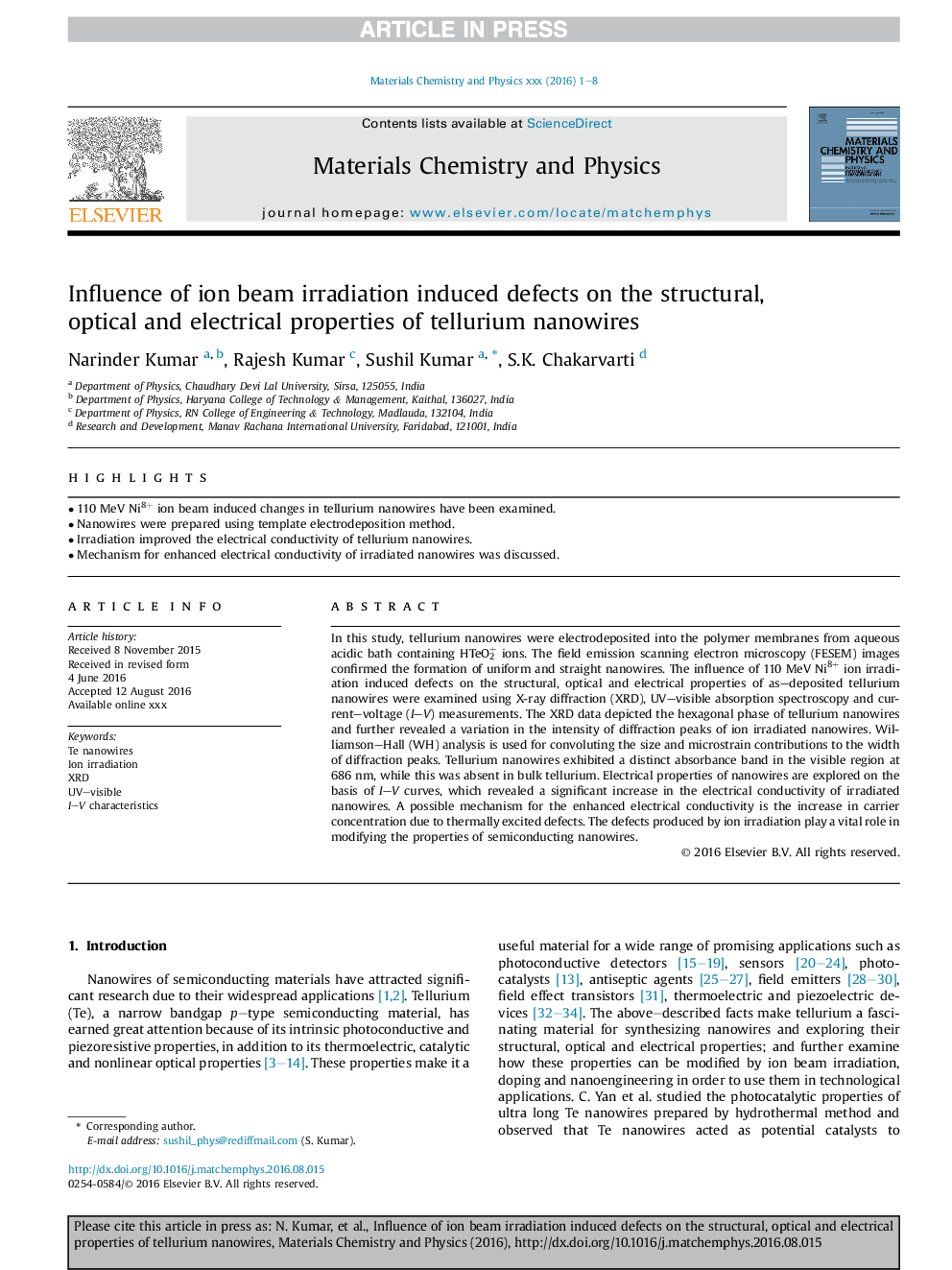| Article ID | Journal | Published Year | Pages | File Type |
|---|---|---|---|---|
| 5448559 | Materials Chemistry and Physics | 2016 | 8 Pages |
Abstract
In this study, tellurium nanowires were electrodeposited into the polymer membranes from aqueous acidic bath containing HTeO2+ ions. The field emission scanning electron microscopy (FESEM) images confirmed the formation of uniform and straight nanowires. The influence of 110Â MeV Ni8+ ion irradiation induced defects on the structural, optical and electrical properties of as-deposited tellurium nanowires were examined using X-ray diffraction (XRD), UV-visible absorption spectroscopy and current-voltage (I-V) measurements. The XRD data depicted the hexagonal phase of tellurium nanowires and further revealed a variation in the intensity of diffraction peaks of ion irradiated nanowires. Williamson-Hall (WH) analysis is used for convoluting the size and microstrain contributions to the width of diffraction peaks. Tellurium nanowires exhibited a distinct absorbance band in the visible region at 686Â nm, while this was absent in bulk tellurium. Electrical properties of nanowires are explored on the basis of I-V curves, which revealed a significant increase in the electrical conductivity of irradiated nanowires. A possible mechanism for the enhanced electrical conductivity is the increase in carrier concentration due to thermally excited defects. The defects produced by ion irradiation play a vital role in modifying the properties of semiconducting nanowires.
Related Topics
Physical Sciences and Engineering
Materials Science
Electronic, Optical and Magnetic Materials
Authors
Narinder Kumar, Rajesh Kumar, Sushil Kumar, S.K. Chakarvarti,
